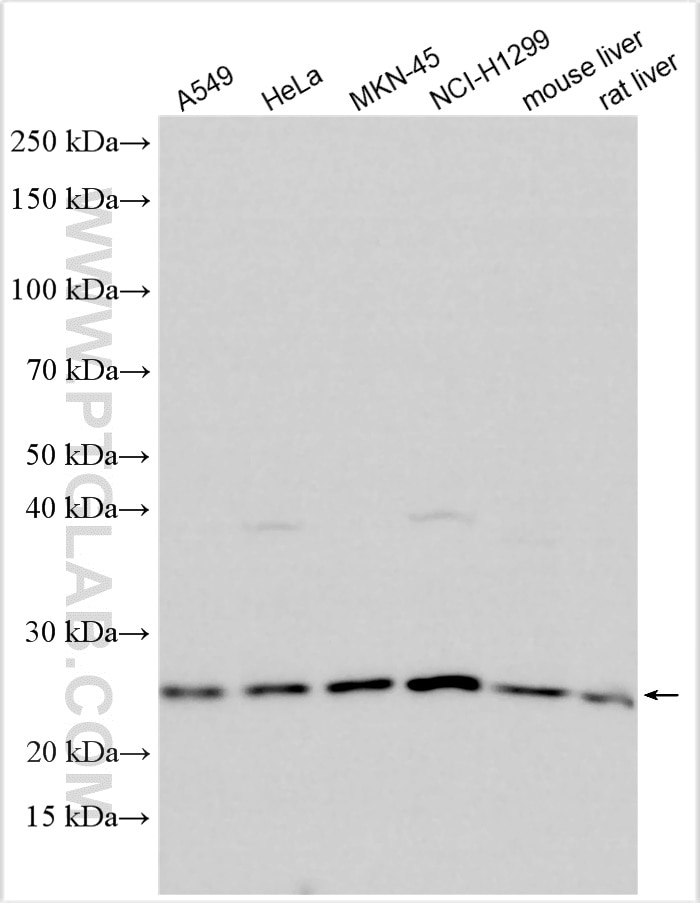Anticorps Polyclonal de lapin anti-TMED5
TMED5 Polyclonal Antibody for WB, ELISA
Hôte / Isotype
Lapin / IgG
Réactivité testée
Humain, rat, souris
Applications
WB, ELISA
Conjugaison
Non conjugué
N° de cat : 30393-1-AP
Synonymes
Galerie de données de validation
Applications testées
| Résultats positifs en WB | cellules A549, cellules HeLa, cellules MKN-45, cellules NCI-H1299, tissu hépatique de rat, tissu hépatique de souris |
Dilution recommandée
| Application | Dilution |
|---|---|
| Western Blot (WB) | WB : 1:500-1:1000 |
| It is recommended that this reagent should be titrated in each testing system to obtain optimal results. | |
| Sample-dependent, check data in validation data gallery | |
Informations sur le produit
30393-1-AP cible TMED5 dans les applications de WB, ELISA et montre une réactivité avec des échantillons Humain, rat, souris
| Réactivité | Humain, rat, souris |
| Hôte / Isotype | Lapin / IgG |
| Clonalité | Polyclonal |
| Type | Anticorps |
| Immunogène | TMED5 Protéine recombinante Ag33253 |
| Nom complet | transmembrane emp24 protein transport domain containing 5 |
| Poids moléculaire observé | 25 kDa |
| Numéro d’acquisition GenBank | BC070051 |
| Symbole du gène | TMED5 |
| Identification du gène (NCBI) | 50999 |
| Conjugaison | Non conjugué |
| Forme | Liquide |
| Méthode de purification | Purification par affinité contre l'antigène |
| Tampon de stockage | PBS avec azoture de sodium à 0,02 % et glycérol à 50 % pH 7,3 |
| Conditions de stockage | Stocker à -20°C. Stable pendant un an après l'expédition. L'aliquotage n'est pas nécessaire pour le stockage à -20oC Les 20ul contiennent 0,1% de BSA. |
Informations générales
TMED5 ( transmembrane p24 trafficking protein 5) is highly expressed incervical and bladder cancer cell lines. TMED5 promotes nuclear autophagy and the malignant behavior of cervical cancer cells (PMID:36530030). Moreover, TMED5 could interact with WNT7B and thus activated the canonical WNT-CTNNB1/β-catenin signaling pathway (PMID:30394198).
Protocole
| Product Specific Protocols | |
|---|---|
| WB protocol for TMED5 antibody 30393-1-AP | Download protocol |
| Standard Protocols | |
|---|---|
| Click here to view our Standard Protocols |


